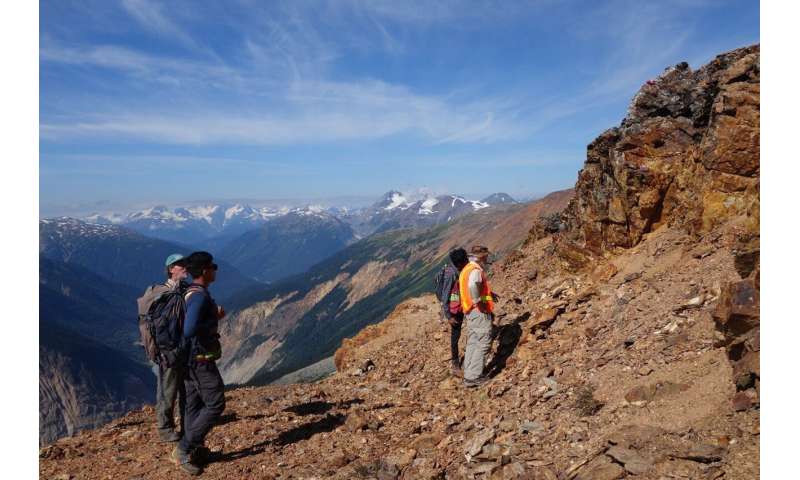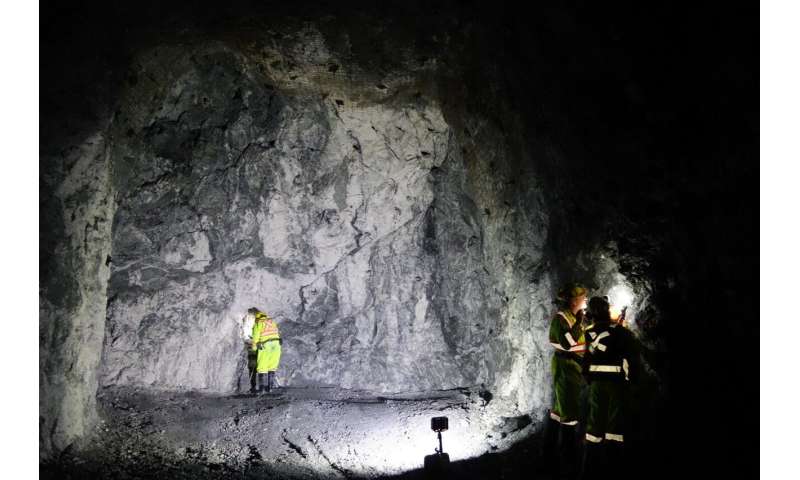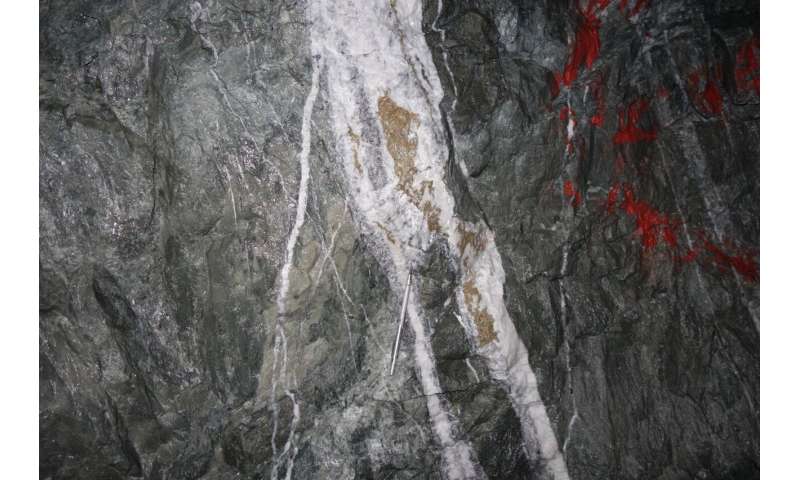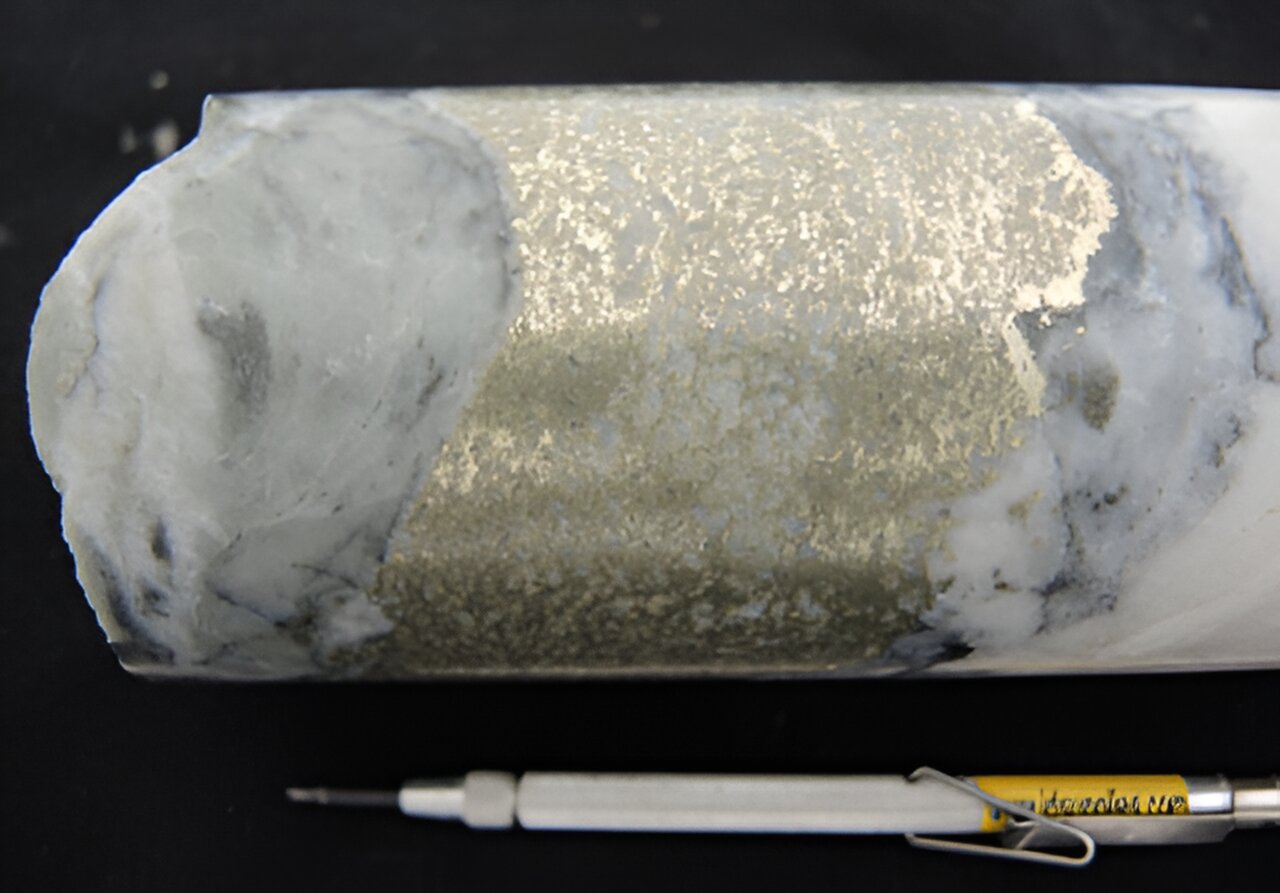Credit: McGill University
Understanding how gold is formed is crucial to knowing where to find it and how to extract it sustainably. McGill researchers have answered a long-standing question in geology that could lead to new ore discoveries.
Researchers traveled to the remote Brucejack gold deposit in northwestern British Columbia to study and collect ancient ore-bearing rocks. The deposit, now on land by plate tectonics, originally formed in a submarine oceanic island arc about 183 million years ago. After analyzing samples at McGill and the University of Alberta, they found that seawater had mixed with ore fluids in the Earth’s crust to form gold.
“These rocks, which date to the Early Jurassic period, are housed in volcanic and sedimentary formations,” said co-author Anthony Williams-Jones, Logan Professor of Geology and Geochemistry in McGill’s Department of Earth and Planetary Sciences. “Using high-resolution mass spectrometry, we decoded their unique chemical signatures. The discovery of seawater-induced gold deposition is new and surprising.”
Clues from sour milk
The findings build on the McGill team’s 2021 discovery that gold nanoparticles bond to form high-quality gold layers, in a process similar to the way proteins clump together to form curds when milk goes sour.
“In our new study, we found that sodium ions in seawater cause gold nanoparticles to clump together, just like the acid in sour milk, and eventually form veins of gold,” said lead researcher Duncan McLeish, a postdoctoral researcher in McGill’s department of earth and planetary sciences.
The presence of seawater suggests that gold veins can form in the seafloor. This means that untapped gold resources could exist in submarine island arcs and deep ocean trenches, where conditions are optimal for gold formation, according to the research published in Proceedings of the National Academy of Sciences.
-

McGill Research Associate Jim Clark, PhD student Kevin Ng, a geologist with Newmont Corp., and McGill Professor Anthony Williams-Jones study a mineralized gold vein seen at the Brucejack mine in August 2022. Credit: Duncan McLeish
-

The McGill research team examines a mineralized (gold-bearing) vein underground at the Brucejack Mine in August 2017. Photo: Duncan McLeish
-

In August 2022, the Brucejack mine will be showing ultra-high-quality (bonanza) gold. Photo: Duncan McLeish
Oceans offer prospects for gold mining
Gold has long been a precious metal and is now also considered a critical mineral, thanks to its applications in green energy technologies, electronic devices, medical equipment and several other areas. Land-based mines often produce low-grade ore that requires extensive processing, with significant environmental costs. Discovering high-grade deposits in the depths of the ocean could help reduce the environmental footprint of gold mining, the scientists say.
“Our findings suggest that it may be easier to form the rare but spectacular concentrations of gold found in high-grade gold veins in sub-seafloor environments. With the recent interest in mining subsea mineral deposits, our research suggests that the Earth’s oceanic crust may indeed contain resources, many of which are needed for the green energy transition, at levels never before appreciated,” Williams-Jones said.
More information:
Duncan F. McLeish et al, Extreme shifts in pyrite-sulfur isotope composition reveal path to gold bonanza, Proceedings of the National Academy of Sciences (2024). DOI: 10.1073/pnas.2402116121
Provided by McGill University
Quote: Treasures Beneath the Ocean Floor? Seawater Plays Role in Gold Formation (2024, July 3) Retrieved July 4, 2024 from https://phys.org/news/2024-07-treasures-beneath-ocean-floor-seawater.html
This document is subject to copyright. Except for fair dealing for private study or research, no part may be reproduced without written permission. The contents are supplied for information purposes only.
